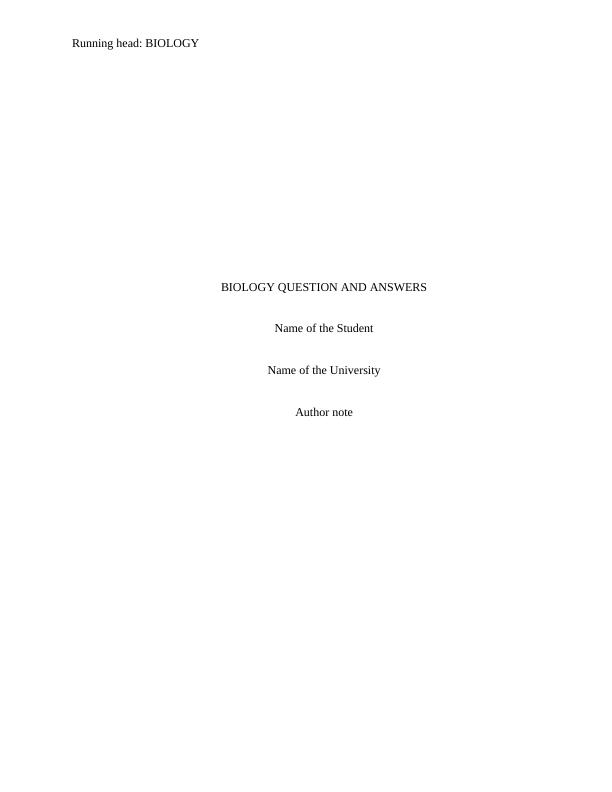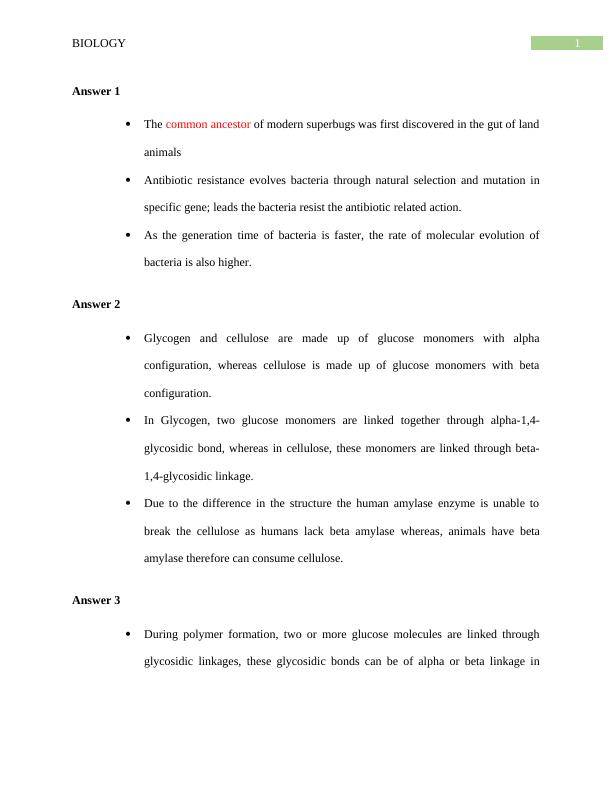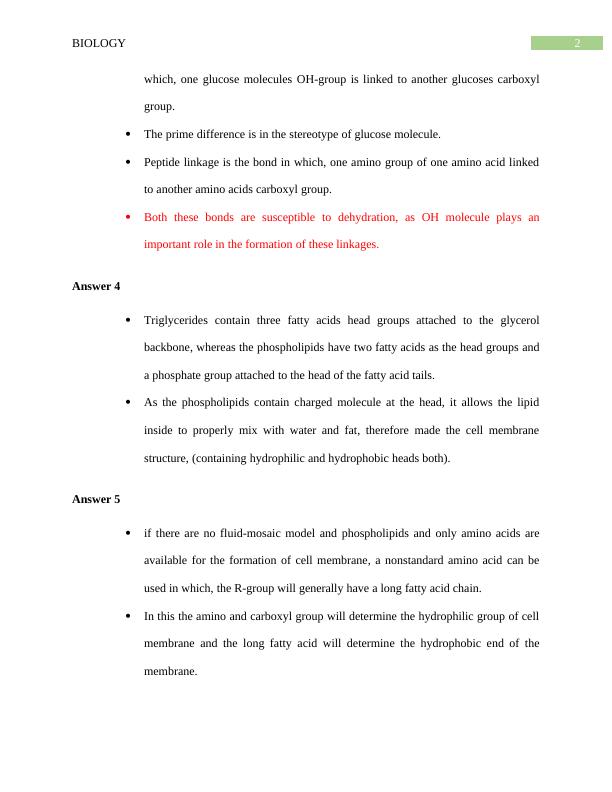Antibiotic Resistance Theory - Assignment
Added on 2021-04-17
About This Document
This report is based on "antibiotic resistance theory and methods". We will discuss here Glycogen and cellulose are made up of glucose monomers with alpha configuration, whereas cellulose is made up of glucose monomers with beta configuration. Due to the difference in the structure, the human amylase enzyme is unable to break the cellulose as humans lack beta-amylase whereas, animals have beta-amylase therefore can consume cellulose. We will discuss here if there are no fluid-mosaic models and phospholipids and only amino acids are available for the formation of the cell membrane, a nonstandard amino acid can be used in which, the R-group will generally have a long fatty acid chain.
Antibiotic Resistance Theory - Assignment
Added on 2021-04-17
End of preview
Want to access all the pages? Upload your documents or become a member.



